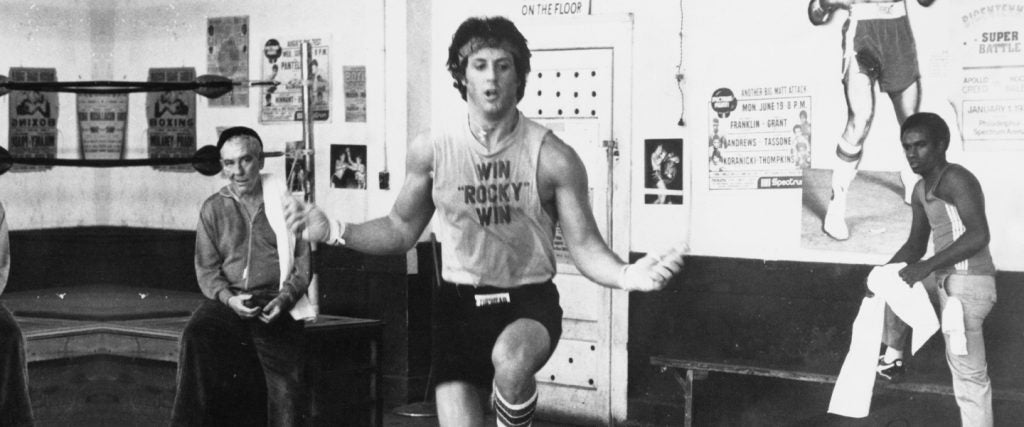A boxing movie isn’t a boxing movie without an epic training montage. And an epic training montage isn’t an epic training montage without a blistering rope-jumping sequence — whether it takes place in a Southern California gym, or in a lonesome cabin in the Siberian wilderness.
But those are just Hollywood actors repeatedly (and impressively) whipping the rope beneath their feet in an invisible whirlwind of activity. They’ve got nothing on what actual fighters, especially the most elite among them, can do with a jump rope in their hands. Case in point:
That’s very impressive. How do I learn to jump rope like that?
How do you jump rope like an elite boxer? For the most part, you don’t. Many of the most elite fighters have been receiving high-level instruction from the time they were six years old, and that includes at least three days a week jumping rope. It’s nice to shoot for the stars, but if you think you’re going to consistently and effortlessly replicate the rope-jumping magic of Brian Viloria after even a year of training, you’re greatly mistaken.
Now, if you’re talking about the desired length of a rope-jumping session, the type of rope used and some of the basic training principles you can employ, that’s far easier to emulate.
The actual jumping style boxers use is more of a skip, which enables them to minimally clear the rope while developing endurance, rhythm and footwork. While jumping rope, it’s critical to stay on your toes, or more accurately on the balls of your feet, so that your feet are constantly in a position to spring. This is a position boxers often find themselves in during fights so that they can quickly move in any direction and effortlessly evade their opponents.
As far as the foot movement itself is concerned, boxers will usually bob from side to side, with their feet slightly offset and varying which foot assumes the forward position. Even if all you did during your jump-rope training was this one movement, it would be sufficient to improve your fleet-footedness and rhythm, and torch hundreds of calories in the process.
But I want to learn some tricks, too!
Well, they’re not really tricks; they’re training tactics. But the “trick” that most people want to learn is how to do a double jump, or double under. The key is for you to keep your body relaxed while you jump and spin the rope without going out of your way to drive the rope forward excessively fast. The rope’s momentum is already carrying it in the right direction. This motion will require a bit more explosiveness out of your feet, and is almost always completed out of a two-footed hop as opposed to a one-footed skip.
The other “trick” most people wish to learn is the criss-cross, which is simply a matter of crossing and then uncrossing your arms at the opportune time. Your hands will cross one another at a low angle, essentially as if each hand was trying to touch the opposing pocket on the other side of your pants. Nothing about your timing needs to change in order to make this move happen.
Again, none of these moves are inherently about showing off; they’re intended to help you generate rhythm, timing and precision, and in the case of the double under, it can be used to add some lower body explosiveness and accelerate the rate at which you fatigue.
How long do boxers jump rope for? I’m pretty sure I can keep up with them in that way at least.
Many professional fighters, including Canelo Alvarez, only jump rope three times each week for about 30 consecutive minutes, which represents the equivalent of a 10-round fight without breaks.
In your case, aim for about 15 minutes and stick to the basics. It might not look spectacular on film — or like your own personal Rocky training montage — but it will be more than enough to develop phenomenal endurance and enhance the explosiveness of your jumps.

